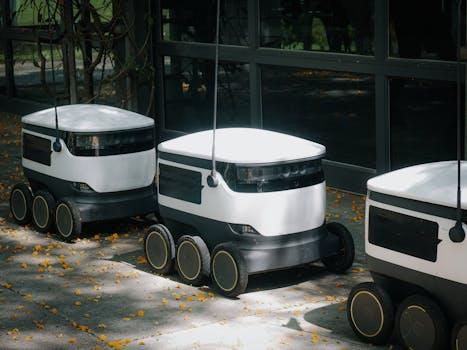Autonomous Parking: Changing Urban Landscapes
With the rapid pace of urbanization, cities are facing increasing challenges related to traffic, pollution, and lack of space. As populations grow and more cars hit the road, parking has become a major problem in many urban areas. But thanks to advanced technology, a solution may be on the rise: autonomous parking.
The Rise of Autonomous Parking
Autonomous parking, also known as self-parking, is a system that uses sensors and algorithms to navigate a vehicle into a parking spot without the driver’s assistance. This technology has been in development for several years and is now becoming more affordable and widely available. With the potential to revolutionize the way we park our cars, autonomous parking is quickly gaining traction in the automotive industry.
Benefits for Urban Landscapes
One of the most significant advantages of autonomous parking is its potential to transform urban landscapes. As we know, parking lots and structures take up a considerable amount of space in cities. With autonomous parking, this space can be optimized and repurposed for other uses. This could include parks, greenery, or even new buildings, helping to make cities more green and livable.
Moreover, autonomous parking can reduce the need for on-street parking, which takes up valuable road space. This can help ease traffic congestion and make roads safer for pedestrians and cyclists. Additionally, since autonomous vehicles can park in tighter spots and park themselves more efficiently, more cars can fit in the same amount of space, increasing parking capacity.
Improved Traffic Flow and Reduced Emissions
One of the most significant contributors to traffic congestion in cities is drivers searching for parking. This not only wastes time and fuel but also increases emissions. Autonomous parking can significantly improve traffic flow as cars can be guided directly to available parking spots. This saves time, reduces fuel consumption, and decreases carbon emissions. The overall result is a smoother and more environmentally friendly transportation system in cities.
Less Need for Parking Infrastructure
With autonomous parking, vehicles can park themselves in tight spaces, eliminating the need for large parking structures and lots. This reduces the cost of constructing, maintaining, and operating parking infrastructure, saving space and money for both individuals and governments. As cities continue to grow, this is a crucial advantage that can help mitigate budget constraints and urban sprawl.
Safer and More Accessible Parking
Autonomous parking systems use advanced sensors and algorithms, making them more accurate and safe than human drivers. This can reduce the risk of accidents and damage to vehicles and structures. Furthermore, autonomous parking can also benefit people with disabilities or limited mobility by providing them with easier and more accessible parking options.
The Future of Autonomous Parking
Although the concept of autonomous parking is still relatively new, it has the potential to significantly transform urban landscapes and address many of the issues that come with urbanization. As the technology continues to advance, we can expect to see a wider adoption of autonomous parking systems in cities worldwide.
With the rise of autonomous vehicles and smart cities, autonomous parking will only become more prevalent and essential. It has the potential to not only improve the way we park our cars but also reduce pollution, improve traffic flow, and create more livable cities for everyone.
As we move towards a more sustainable and technologically advanced future, autonomous parking will play a vital role in shaping our urban landscapes. It’s time to embrace this innovative solution to the age-old problem of parking in our cities.










